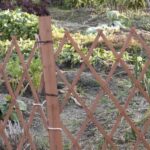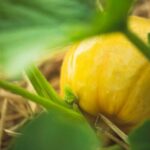Can you use painted pine for vegetable gardens? When it comes to creating a beautiful and functional garden space, many people are drawn to the idea of using painted pine for their vegetable beds. The appeal of this versatile and affordable material is undeniable, but the question remains: is it safe and suitable for growing vegetables?
In this article, we will explore the benefits of using painted pine, address potential risks and concerns, provide safe painting techniques, tips for choosing the right type of pine, preparing the soil and pine beds, maintaining painted pine garden beds, and explore alternative materials for vegetable gardens. Let’s delve into the world of painted pine and vegetable gardening to find out if it’s a viable option for your gardening needs.
Using painted pine for gardening offers numerous advantages that go beyond its practical functionality. It adds a touch of charm and aesthetic appeal to any garden space while providing a versatile and customizable option for creating raised beds or garden borders.
However, before diving headfirst into using painted pine for your vegetable garden, it’s important to consider potential risks and concerns. There is always the possibility of chemicals or toxins leaching from the paint into the soil, which could harm your plants or affect their safety for consumption. We will discuss these concerns in detail in this article to help you make an informed decision about whether painted pine is right for your gardening needs.
Benefits of Using Painted Pine
Using painted pine for vegetable gardens has several benefits that make it an attractive option for gardeners. Here are some of the advantages of using painted pine:
- Aesthetic Appeal: Painted pine adds a pop of color and visual interest to the garden, enhancing its overall appearance.
- Versatility: Pine can be easily cut and shaped, allowing for customizable garden bed designs to fit any space or gardening style.
- Affordability: Pine is a relatively inexpensive wood option, making it cost-effective for building raised garden beds or planter boxes.
In addition to these benefits, painted pine can also provide a durable and long-lasting solution for creating vegetable garden beds. With proper maintenance and care, painted pine can withstand the elements and provide a sturdy framework for growing vegetables.
It’s important to keep in mind that when using painted pine for vegetable gardens, there are considerations to take into account in terms of safety and suitability. While there are definite benefits to using this material, it’s essential to also address any potential risks or concerns that may arise from its use.
Potential Risks and Concerns
When considering using painted pine for vegetable gardens, it is important to address some potential risks and concerns associated with this practice. One of the main concerns is the possibility of chemicals or toxins leaching into the soil from the paint used on the pine. These chemicals can potentially be absorbed by the vegetables grown in the garden beds, posing a risk to human health upon consumption.
Another risk to consider is the longevity of the painted pine. Over time, the paint may chip or peel, especially when exposed to the elements such as sunlight and moisture. This can lead to fragments of paint getting into the soil, further raising concerns about contamination.
To minimize these risks, it is crucial to use safe painting techniques and suitable paint options when painting pine for vegetable gardens. Additionally, choosing the right type of pine that is less prone to leaching chemicals and preparing the soil properly are important steps in mitigating these potential risks. It’s also essential to maintain painted pine garden beds regularly to prevent chipping and ensure their longevity.
| Potential Risks | Concerns |
|---|---|
| Possibility of chemicals leaching into the soil | Risk to human health from consuming contaminated vegetables |
| Paint longevity and chipping | Risk of paint particles getting into the soil |
Safe Painting Techniques
When considering using painted pine for vegetable gardens, it is crucial to prioritize safety and ensure that the paint used does not pose any risks to the soil or the plants grown in the garden beds. To safely paint pine for vegetable gardens, it is essential to choose non-toxic, eco-friendly paint options that are specifically designed for use in garden settings.
Look for paints labeled as “safe for gardens” or “food-safe” to ensure that they do not contain any harmful chemicals or toxins that could leach into the soil.
Before painting the pine garden beds, it is important to properly prepare the wood surface to ensure that the paint adheres effectively and lasts longer. Start by sanding the pine to create a smooth and even surface for painting. This will also help remove any existing coatings or treatments on the wood. Once sanded, it is recommended to apply a primer designed specifically for outdoor use to further protect the wood and provide a good base for the paint.
When applying paint to the pine garden beds, be sure to use multiple thin coats rather than one thick coat. This will help prevent drips and ensure even coverage. Additionally, consider using a brush or roller specifically designed for outdoor use to achieve a professional finish.
Once the painting process is complete, allow sufficient time for the paint to dry and cure before filling the garden beds with soil and planting your vegetables. By following these safe painting techniques, you can ensure that your painted pine garden beds are both visually appealing and safe for growing vegetables.
Choosing the Right Type of Pine
When it comes to using painted pine for vegetable gardens, choosing the right type of pine is crucial for the success and safety of your garden. Not all types of pine are suitable for use in vegetable gardens, as some may contain higher levels of toxins or may not be as durable for outdoor use. It’s important to carefully select the type of pine that will best suit your needs and provide a safe environment for growing vegetables.
One popular choice for painted pine garden beds is Western Red Cedar, known for its natural resistance to insects and decay. This type of pine is often used in outdoor applications and can withstand the elements without needing to be chemically treated.
Another option is Douglas Fir, which also has natural resistance to decay and is a strong and durable choice for vegetable garden beds. It’s important to avoid treated pines or those with high levels of toxins that could leach into the soil and affect the growth of your vegetables.
In addition to considering the type of pine, it’s also essential to look for sustainably sourced options. Choosing pine from sustainable forests ensures that you are not contributing to deforestation or harming ecosystems in the process.
Look for certifications such as FSC (Forest Stewardship Council) or SFI (Sustainable Forestry Initiative) when selecting your painted pine for vegetable gardens. By choosing the right type of sustainably sourced pine, you can create a safe and eco-friendly environment for growing your own fresh produce.
Preparing the Soil and Pine Beds
When using painted pine for vegetable gardens, it is essential to properly prepare the soil and pine beds to ensure a healthy and successful growing environment. Here are some tips for preparing the soil and pine beds:
1. Clear the area: Before setting up your painted pine garden beds, it is important to clear the area of any debris, weeds, or old plants. This will create a clean slate for your vegetable garden and prevent any potential pests or diseases from spreading to your new crops.
2. Improve soil drainage: Pine tends to retain moisture, so it’s crucial to ensure proper drainage for your vegetable garden beds. Incorporating organic matter such as compost or well-rotted manure can help improve soil structure and drainage. Additionally, consider adding a layer of gravel at the bottom of the bed to assist with drainage.
3. Test and amend the soil: Testing the soil’s pH levels and nutrient content can provide valuable insight into its suitability for vegetable gardening. Make necessary amendments based on the test results, such as adding lime to raise pH levels or sulfur to lower them. Ensuring that the soil is rich in nutrients will promote healthy plant growth.
By following these preparation tips, you can create an optimal growing environment for your vegetable garden while using painted pine as the material for raised beds. Properly preparing the soil and pine beds is crucial for ensuring successful growth and a bountiful harvest of fresh vegetables.
Maintaining Painted Pine Garden Beds
Preventing Paint Chipping
To maintain the aesthetic appeal and longevity of painted pine garden beds, it is important to take measures to prevent paint chipping. One way to achieve this is by applying a sealant or protective finish over the painted surface. This additional layer of protection can help shield the paint from environmental elements such as moisture and UV rays, which can cause the paint to degrade over time.
Cleaning and Maintenance
Regular cleaning and maintenance are essential for preserving the appearance and functionality of painted pine garden beds. It is recommended to clean the painted surfaces periodically using a mild soap and water solution. Avoid using harsh chemicals or abrasive cleaning tools, as these can damage the paint. Additionally, inspect the garden beds for any signs of wear or damage, and address any issues promptly to prevent further deterioration.
Ensuring Longevity
Proper care and maintenance can significantly extend the lifespan of painted pine garden beds. As with any outdoor wooden structure, regular inspections for rot, pests, and structural integrity are crucial for ensuring longevity.
By addressing any issues early on and implementing preventive measures, such as reapplying sealant or touch-up painting when necessary, gardeners can enjoy their painted pine beds for years to come. Taking these steps not only preserves the visual appeal of the garden beds but also ensures a safe environment for growing vegetables in a sustainable manner.
Alternative Materials for Vegetable Gardens
When it comes to creating vegetable gardens, there are plenty of materials to choose from aside from painted pine. While painted pine may have its advantages, some individuals may prefer alternative options due to personal preference or environmental concerns. It’s important to explore these alternative materials to determine which one best suits your needs and aligns with sustainable gardening practices.
Cedar
Cedar is a popular choice for vegetable garden beds due to its natural resistance to rot and pests. This type of wood can also last for several years without the need for chemical treatments, making it an environmentally friendly option. While cedar may be more expensive than pine, the longevity and durability of the material can offset the initial cost.
Composite Lumber
Composite lumber is made from a blend of wood fibers and recycled plastic, making it a durable and low-maintenance option for vegetable garden beds. This material is resistant to rot, insects, and warping, offering a long-lasting solution for gardeners. Additionally, composite lumber is available in various colors and finishes, allowing for customization based on personal preferences.
Galvanized Steel or Aluminum
For a modern and sleek look, galvanized steel or aluminum raised beds are becoming increasingly popular among gardeners. These materials offer excellent durability and are resistant to corrosion, providing a long-term solution for growing vegetables. While these options may be pricier compared to wood alternatives, their longevity and minimal maintenance requirements make them an attractive choice for some individuals.
Conclusion
In conclusion, the use of painted pine for vegetable gardens can offer both aesthetic and practical benefits. The versatility of painted pine allows for customized garden bed designs that can complement any outdoor space. However, it is important to consider the potential risks and concerns associated with using painted pine, such as the possibility of chemicals or toxins leaching into the soil.
To ensure the safety and suitability of using painted pine for vegetable gardens, it is crucial to follow safe painting techniques and choose the right type of pine. By selecting non-toxic paint options and properly preparing the soil and pine beds for planting, gardeners can minimize any potential risks associated with using painted pine.
Ultimately, while painted pine can be a visually appealing choice for vegetable garden beds, it is important to prioritize safe and sustainable gardening practices. If there are concerns about using painted pine, there are alternative material options available for building vegetable garden beds that may better suit the needs and preferences of individual gardeners. By considering all factors and making informed decisions, gardeners can create thriving vegetable gardens that are both beautiful and safe for produce consumption.
Frequently Asked Questions
Is Treated Pine Safe for Vegetable Gardens?
Treated pine can be safe for vegetable gardens if the wood has been treated with non-toxic and environmentally friendly preservatives. Look for wood that is labeled as suitable for organic gardening or specifically for use in vegetable gardens to ensure it is safe for growing edibles.
What Kind of Paint Is Safe for Raised Garden Beds?
When selecting paint for raised garden beds, it is important to choose a non-toxic, water-based paint that will not leach harmful chemicals into the soil.
Look for paints labeled as safe for use on children’s furniture or toys, as these are formulated to be non-toxic and safe for use in environments where there may be direct contact with skin or ingestion.
Can You Use Painted Wood for Raised Beds?
It is generally not recommended to use painted wood for raised beds, especially if the paint contains toxic chemicals. Over time, the paint can chip or peel, allowing these chemicals to leach into the soil and potentially harm plants and vegetables.
If you do choose to use painted wood, ensure that the paint is non-toxic and specifically designed for outdoor use in garden environments.

If you’re looking to get into vegetable gardening, or are just looking for some tips on how to make your current garden better, then you’ve come to the right place! My name is Ethel and I have been gardening for years. In this blog, I’m going to share with you some of my best tips on how to create a successful vegetable garden.





